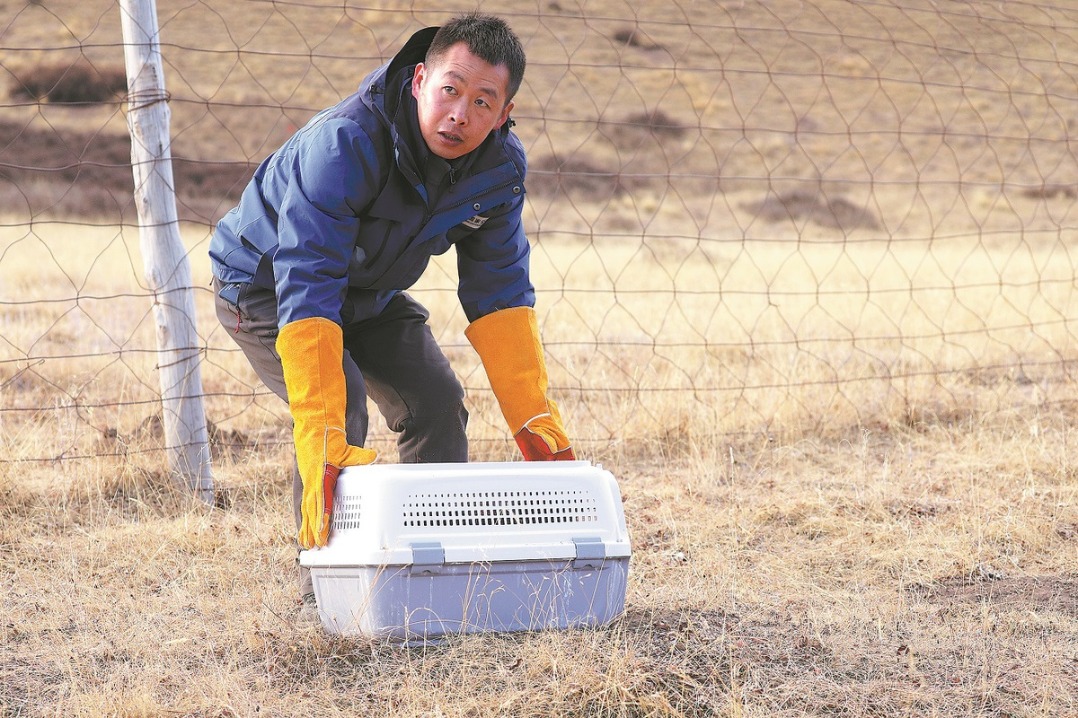Virus experts expect normalcy by spring


Control measures optimized at right time amid increased preparedness
China has optimized its COVID-19 response measures at the right time, amid the reduced fatality rate of the Omicron variant and the increased preparedness of the nation's healthcare system, experts said over the weekend.
They cautioned that the country will face "waves of COVID-19 infection" through winter, but added that the overall epidemic situation is controllable and a return to full normalcy can be expected by spring.
Wu Zunyou, chief epidemiologist at the Chinese Center for Disease Control and Prevention, said that the rate of severe and critical cases plummeted from 16.47 percent in 2020 to 3.32 percent last year. By Dec 5, the rate further dropped to 0.18 percent.
"The past three years have been very difficult. We have waited for the virus to become less virulent and less of a threat to people's health. We have also earned plenty of time to expand our vaccination reach and build our capacity to cope with the disease," he said at a forum held on Saturday.
On Dec 7, China released a set of 10 optimized COVID-19 rules, including allowing asymptomatic cases and patients with mild symptoms to isolate at home and restricting the need for mass testing.
Wu said these policy adjustments were rolled out when the number of deaths per week globally had hit the lowest level and stayed below 10,000 for consecutive weeks.
"If these measures were announced earlier, say at the beginning of this year, the mainland would have seen 866,000 to 1.039 million more deaths," he said.
Zeng Guang, a former researcher at the China CDC, observed that the COVID-19 infection has changed with time. While its transmissibility has increased, its ability to cause death has declined.
"The 10 new measures, which are also meant to facilitate opening-up, couldn't have come at a more opportune moment," he said during another online event on Saturday.
The high transmissibility rate of the Omicron variant, the cold weather and the waning immunity from vaccination are all contributing to the rising number of infections in many regions, Zeng said.
"Beijing and many local governments have launched targeted emergency measures to prevent overstretching of their local medical systems. The overall situation is under control and is set to improve," he added.
Chief epidemiologist Wu said that the mainland will likely be hit by three more waves of COVID-19 infection in the coming months. Large cities are already facing the first wave, which began in mid-December and will continue till mid-January.
Traveling by migrant workers during the Spring Festival holiday will fuel the second wave and the third wave will occur when these workers return to their workplaces between late February and mid-March.
"Around 10 to 30 percent of Chinese people will get infected this winter, and the fatality rate will range from 0.09 to 0.16 percent," he said.
To step up preparedness, Wu recommended getting a COVID-19 vaccine booster shot, maintaining hand hygiene and wearing masks. More efforts should be devoted to protecting vulnerable groups, he said.
Zhang Boli, a top traditional Chinese medicine expert and an academic at the Chinese Academy of Engineering, said that the epidemic is expected to stabilize by spring, following a peak in January and February, and people will be able to resume their normal lives.
Liang Wannian, a senior expert with the National Health Commission, said the number of severe cases and the strain on hospitals should be closely monitored to map the possibility of outbreaks.
Liang said pressing tasks at present include raising vaccination rates among the elderly and those with chronic diseases, stocking up on medical equipment, strengthening hospital capacity and stepping up surveillance of viral mutations.
- Vitality of Samawar dance in Xinjiang shines in hustle and bustle of daily life
- Chinese vice-premier urges efforts to continuously enhance industrial innovation capabilities
- Sholha Tibetan Drum
- China holds ceremony to honor Shenzhou XVIII, Shenzhou XIX astronauts
- Lhaze Dramyen six-string instrument
- China unveils winners of WLA Prize in boost to global basic research





































